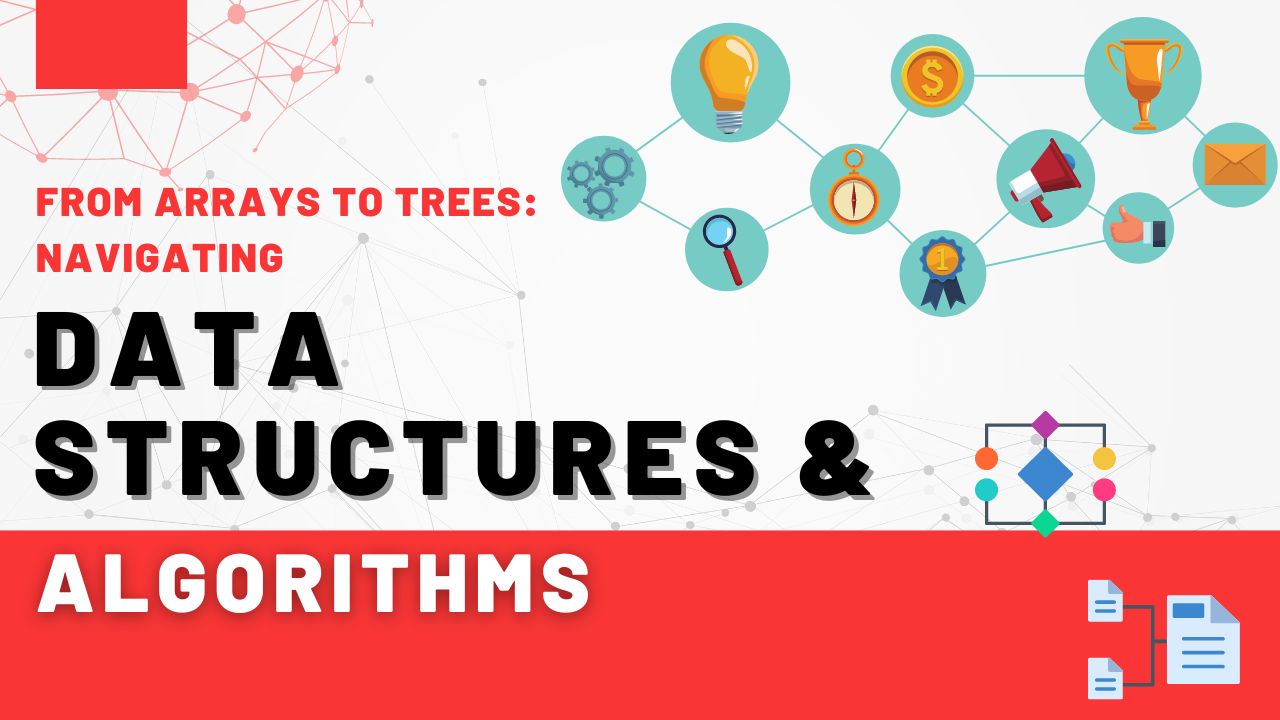Conquering the Code Castle: Your Guide to Data Structures and Algorithms (DSA)

Imagine you're a knight on a quest for programming glory. Your weapon? Code. But to truly slay the challenges in the code castle, you need a strong foundation – Data Structures and Algorithms (DSA).
DSA: Building Blocks of Efficient Code
Think of DSA as the blueprints and tools used to build efficient and powerful programs. Data structures are like organized cabinets in your code castle, storing information in a specific way. Algorithms, on the other hand, are the knight's battle strategies – step-by-step instructions to solve problems and retrieve information from those cabinets (data structures) efficiently.
Why is DSA Important for Programmers?
Mastering DSA is crucial for several reasons:
Efficiency: Efficient code means faster programs that use less memory and resources. DSAs help you choose the right data structure and algorithm for the task, optimizing performance.
Problem-Solving Skills: DSA equips you with a toolbox of techniques to tackle any coding challenge. You learn to break down problems into smaller steps and develop logical solutions.
Better Code Readability and Maintainability: Well-structured code using appropriate DSAs is easier to understand and maintain, both for you and your fellow programmers.
Cracking Coding Interviews: Many tech companies heavily rely on DSA concepts during coding interviews. A strong DSA foundation can significantly improve your chances of landing your dream job.
Popular Data Structures: Your Code Castle's Cabinets
Here are some essential data structures to get you started:
Arrays: Imagine a shelf with numbered slots. Arrays store a fixed number of items in a sequential order, allowing access by index (position number).
Linked Lists: Think of a chain where each link holds data and points to the next link. Linked lists are flexible in size and can be used to insert or remove elements efficiently.
Stacks: Like a stack of plates, elements are added (pushed) and removed (popped) from the top, following a "Last In, First Out" (LIFO) principle.
Queues: Similar to a queue line, elements are added (enqueued) to the back and removed (dequeued) from the front, following a "First In, First Out" (FIFO) principle.
Hash Tables: Imagine a filing cabinet with compartments labeled with keywords. Hash tables store key-value pairs and allow for fast retrieval based on the key.
Algorithms: Your Knight's Battle Strategies
Now, let's explore some common algorithms, the knight's battle plans:
Searching Algorithms: These algorithms help you find specific data within a data structure. Popular examples include linear search (checking each element) and binary search (repeatedly dividing the search space).
Sorting Algorithms: Ever organized your bookshelf? Sorting algorithms arrange data in a specific order (ascending or descending). Bubble sort, insertion sort, and merge sort are some common methods.
Traversal Algorithms: These algorithms define a way to visit each element in a data structure. It's like the knight exploring every room in the castle, ensuring no information is left behind.
Recursion: Imagine a knight encountering a maze within the castle. Recursion is a problem-solving technique where a function calls itself repeatedly with smaller sub-problems until a base case is reached.
Learning DSA: Your Quest for Programming Mastery
Conquering DSA takes dedication and practice. Here are some tips to get started:
Start with the Basics: Begin with fundamental data structures and algorithms before diving into more complex concepts.
Visualize It: Use online resources and diagrams to visualize how data structures work and how algorithms execute step-by-step.
Practice Makes Perfect: Work on practice problems and coding challenges to solidify your understanding. There are many online platforms dedicated to DSA practice.
Join the Community: Connect with other programmers learning DSA. Online forums and communities can offer support, resources, and a platform to share your learning journey.
DSA: A Never-ending Quest for Knowledge
The world of DSA is vast and constantly evolving. As you progress on your programming journey, you'll encounter new data structures and algorithms tailored to specific tasks. Remember, DSA is not just about memorizing; it's about understanding core concepts and developing your problem-solving skills.
With dedication and a thirst for knowledge, you can conquer the code castle and build powerful, efficient programs. So, grab your virtual sword (code editor), embrace the challenge, and embark on your DSA quest!

